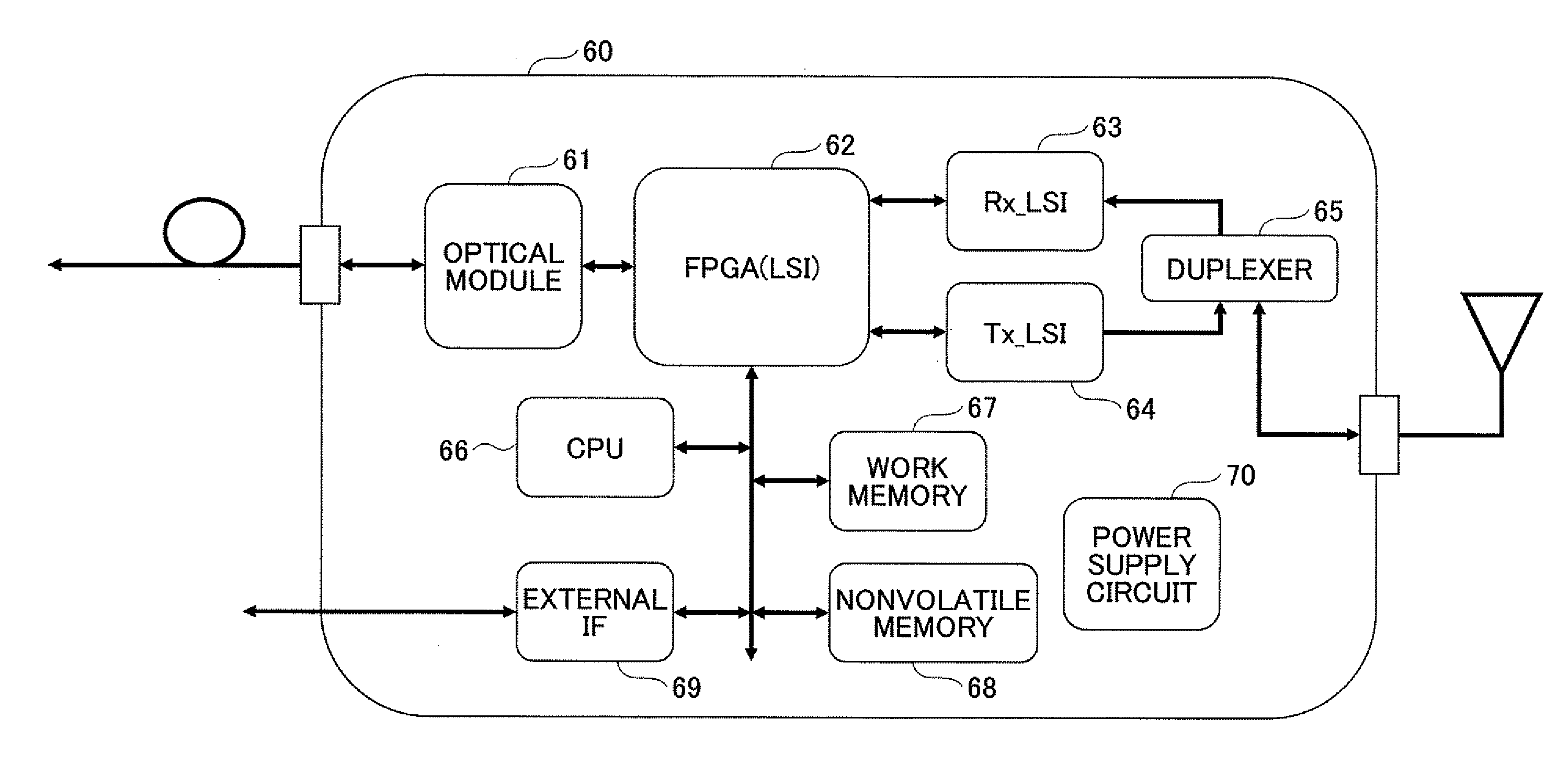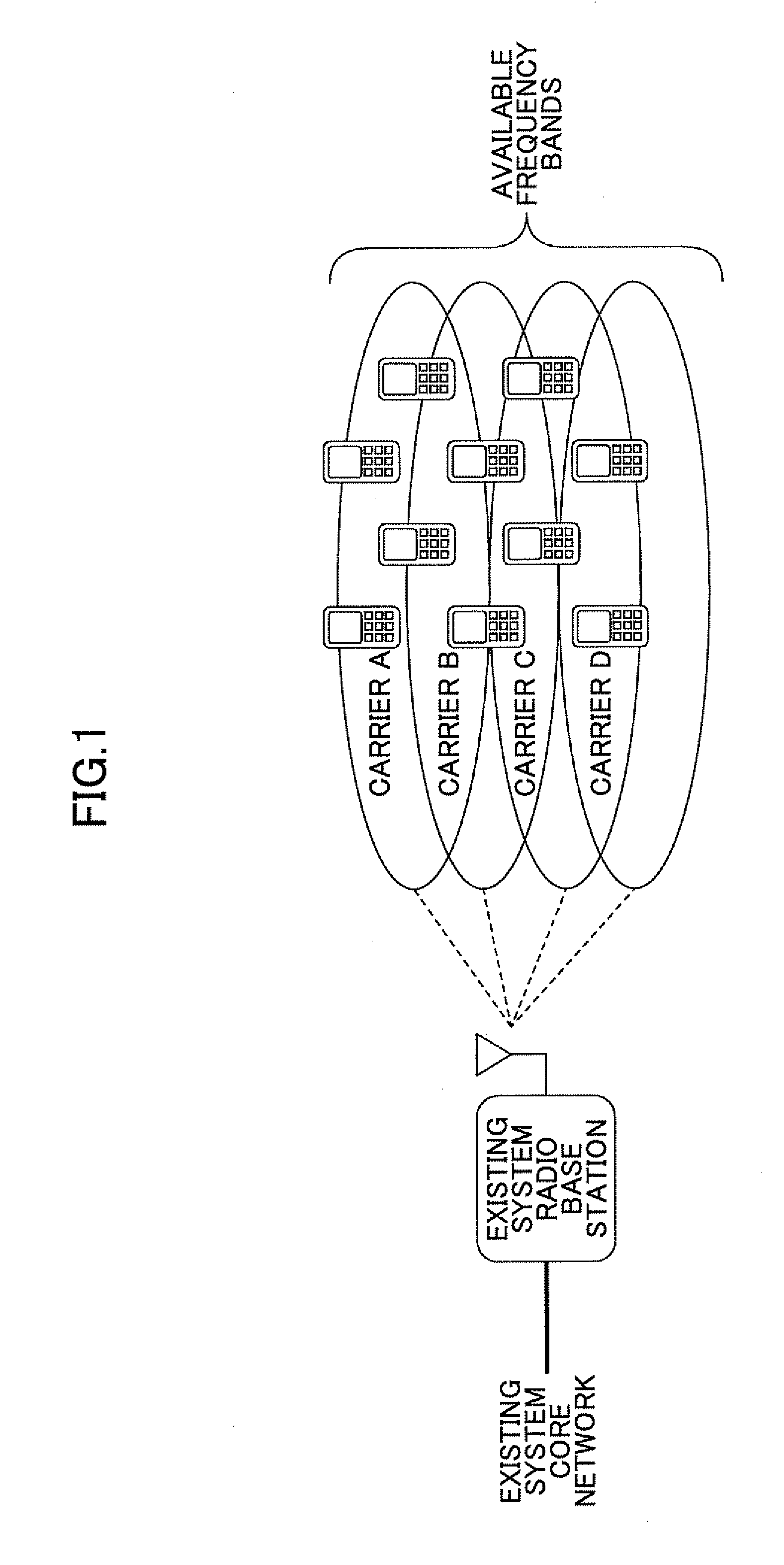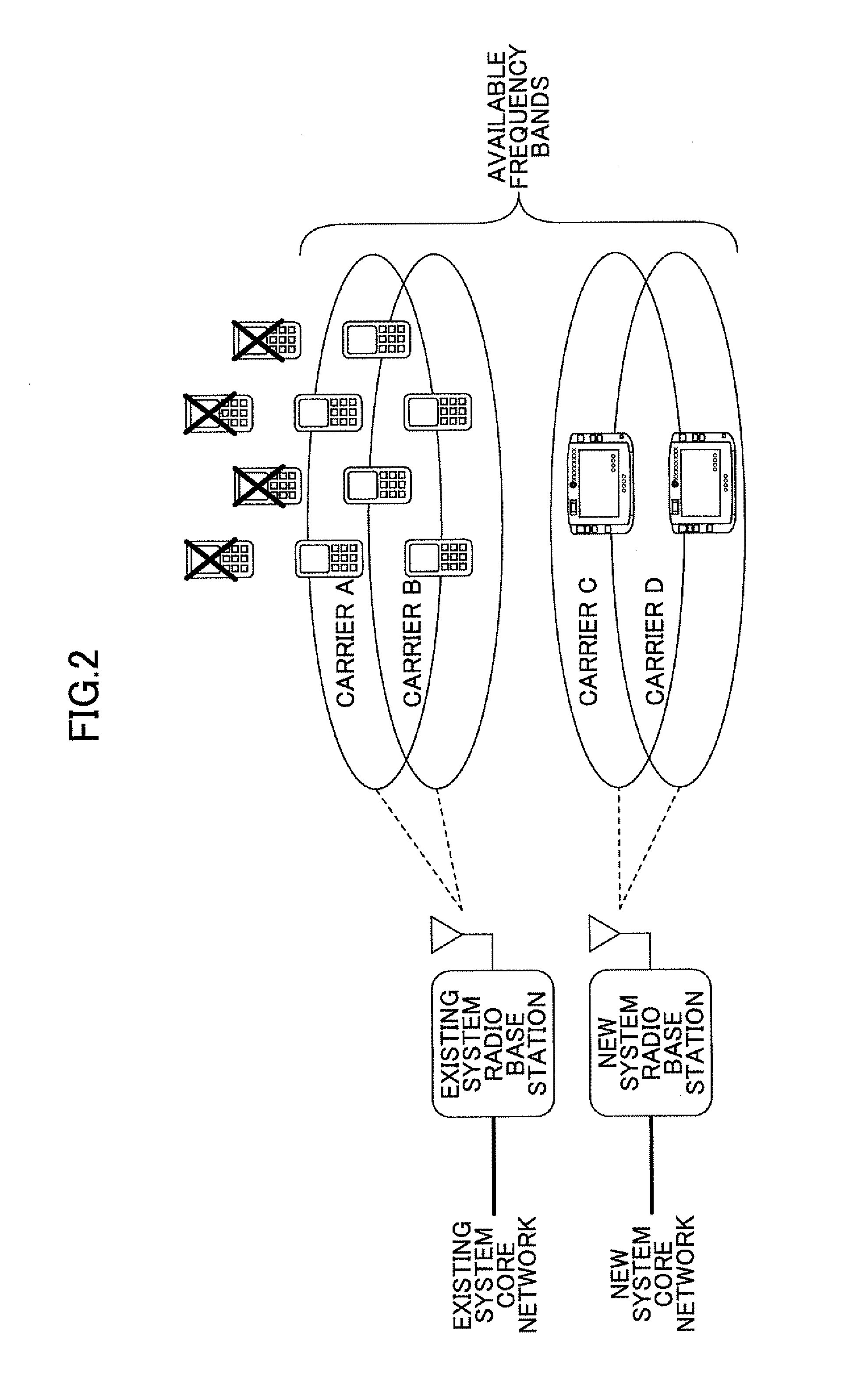Communication system and radio processing apparatus
a radio processing and communication system technology, applied in the field of communication system and radio processing apparatus, can solve the problems of affecting the business deployment of telecommunications companies, radio resources that may be effectively utilized within a specific frequency range (or frequency band) are limited, and communication via radio waves may consume radio resources
- Summary
- Abstract
- Description
- Claims
- Application Information
AI Technical Summary
Problems solved by technology
Method used
Image
Examples
first embodiment
Operation of First Embodiment
[0048]In the configuration illustrated in FIG. 5, the existing call processing section 11a and the new system call processing section 13a each monitor the statuses of the carriers A, B, C, and D, and start operating when they acknowledge that the carriers A, B, C, and D are available. The carrier status generating circuit 27 in the shared radio processing apparatus 15 allocates the carriers C and D to the existing system radio base station apparatus 12 and the carriers A and B to the new system radio base station apparatus 13, and initiates the operation based on such initial allocation statuses of the carriers A, B, C, and D. The initial allocation statuses of the carriers A, B, C, and D are also supplied to the comparator 28.
[0049]When the existing system radio base station apparatus 12 and the new system radio base station apparatus 13 start up and establish connections between the circuits within the respective radio base station apparatuses 12 and 1...
second embodiment
Operation of Second Embodiment
[0090]FIG. 8 is a flowchart illustrating processing including steps executed by the monitoring control section 46 (i.e., “C & M”) in FIG. 7. In this processing, the users of the carrier subject to system reallocation may be shifted to another carrier by utilizing the handover function. Similar to the initial status of the first embodiment, the carriers A and B are allocated to the new system, while the carriers C and D are allocated to the existing system. Note that in this initial status, the attenuator circuit 51 has not lowered the radio output power.
[0091]Similar to the processing of the first embodiment, when a decrease in a communication amount is detected in the new system while an increase in a communication amount is detected in the existing system, the monitoring control section 46 determines whether it has received from the carrier status generating circuit 47 a report indicating that the carrier B (or carrier A) is no longer available to the...
PUM
 Login to View More
Login to View More Abstract
Description
Claims
Application Information
 Login to View More
Login to View More - R&D
- Intellectual Property
- Life Sciences
- Materials
- Tech Scout
- Unparalleled Data Quality
- Higher Quality Content
- 60% Fewer Hallucinations
Browse by: Latest US Patents, China's latest patents, Technical Efficacy Thesaurus, Application Domain, Technology Topic, Popular Technical Reports.
© 2025 PatSnap. All rights reserved.Legal|Privacy policy|Modern Slavery Act Transparency Statement|Sitemap|About US| Contact US: help@patsnap.com



